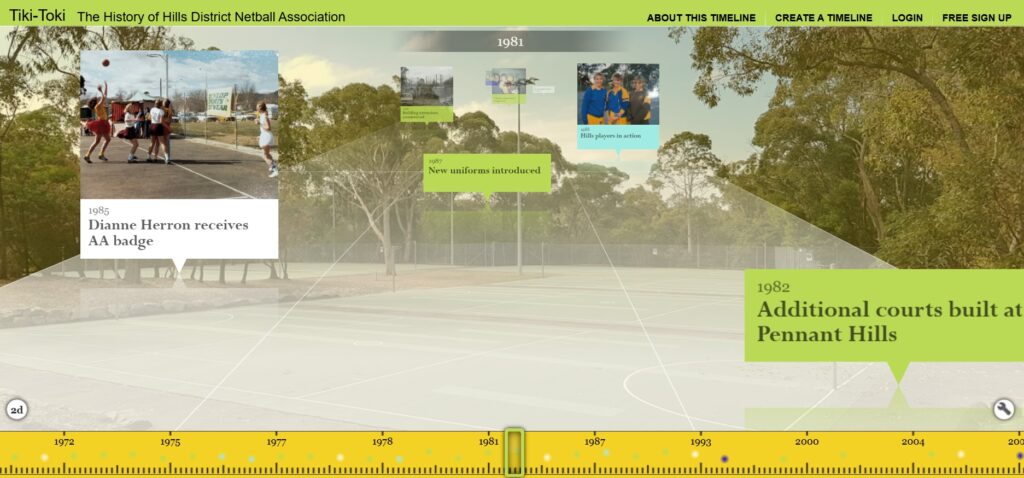My work with Hills District Netball Association (HDNA) over the semester has culminated in the creation of an interactive digital timeline which reflects significant events, achievements and anniversaries throughout the association’s history. To support this timeline, I have created two short video clips to be posted to HDNA’s social media to drive awareness of and engagement with the timeline. Moreover, I have digitised an extensive collection of physical posters which detail HDNA’s history, ensuring that the contents of these posters are preserved and kept in an accessible online archive.
My project reflects how HDNA has acted as a significant local organisation which has fostered a sense of community and provided women and girls with a space to thrive in their sporting endeavours. Through spotlighting the efforts and achievements of pivotal members of the HDNA executive team, players and umpires, my project showcases how community netball organisations have created opportunities for women to demonstrate leadership and carve out a path for themselves in sport. Netball is the number one team sport for female participation in the country, playing a significant role in the lives of scores of Australian women and girls. This digital documentation of HDNA’s history reflects one example of a community netball organisation which has offered a space for women and girls from the local area to demonstrate their leadership capacity, develop strong friendships and flourish in sport.
I chose to present my project through this digital timeline format as I wanted to present the history of HDNA in an engaging, interactive and visually rich manner. I researched several different online timeline programs through which I could present my project, though I ultimately decided to use TikiToki. I was particularly interested in the 3D view option that this program offered, which allowed me to showcase HDNA’s history in a visually stimulating and engaging way, rather than presenting a static, text-based timeline. This platform also enabled me to create an interactive digital timeline, with users able to scroll through the years using the slider at the bottom of the webpage, and click on various elements of the timeline to reveal further details and more visual media. The timeline has also been divided into categories, including HDNA History (general key events), Achievements, Umpires, Anniversaries and Snapshots. Each event in the timeline is colour-coordinated in alignment with the corresponding category, allowing users to visualise different themes.

A snapshot of the interactive digital timeline.
It is my aim for this interactive presentation format to allow the history of the association to be easily digested and engaged with by a wide range of audiences, especially younger audiences who would likely be averse to engaging with large amounts of text-based information. This is particularly important in the context of my organisation, with young players, from 8-year-olds to teenagers, constituting a significant portion of the HDNA community. Through the integration of various multimedia elements, including photos, videos, text and external links, I have been able to create a digital timeline that can be displayed on HDNA’s website, capturing the rich history of the association in an engaging way. As someone who has been playing netball at this association for years, it was fascinating to see how the association has evolved over time and to see how a place that I know so well came to be. I hope that engaging with this timeline will provide a similar experience for other HDNA community members, enabling them to visualise the significant events and instrumental volunteers that have shaped the association into what it is today.
A link to the timeline can be found here.


